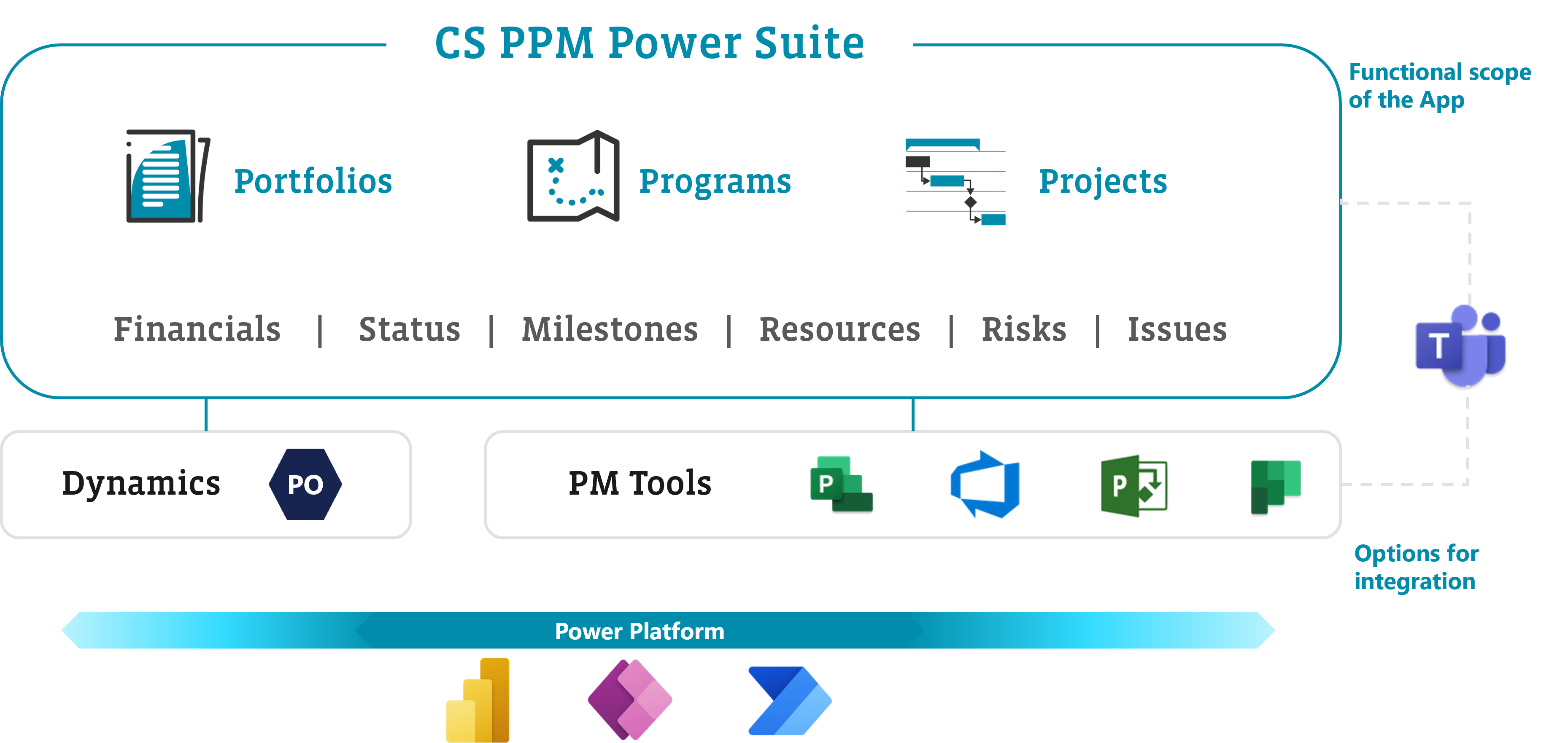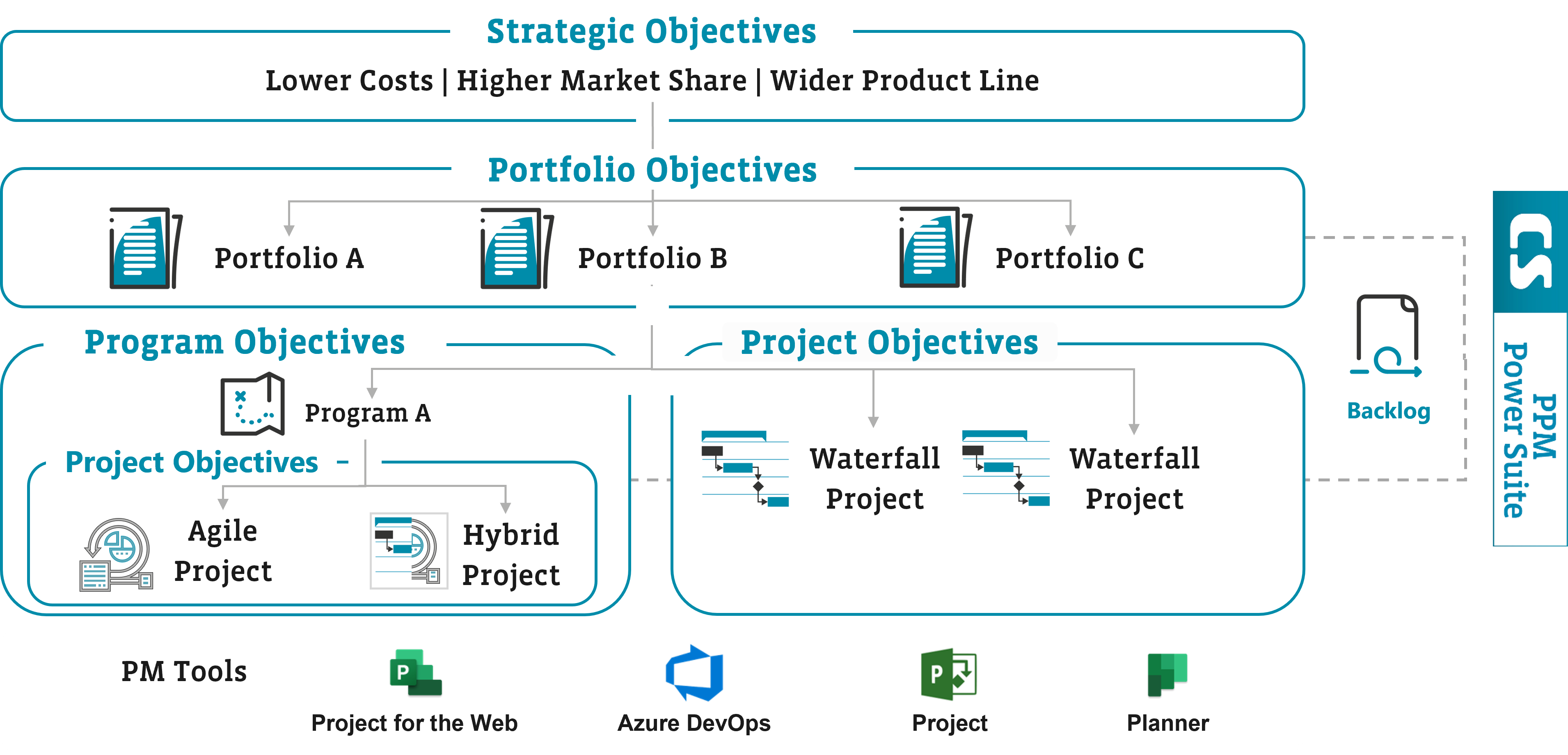Responding to challenging times has demonstrated that solutions can no longer be an either-or choice. During the pandemic as well as current crises, the combination of different ideas and approaches has proven to be the way forward. In daily business, a new openness for rethinking can be observed, in which remote work, the need of sustainable technologies or the work culture is transformed into hybrid ways. For several years now, the increasing use of hybrid methods has also been evident in the context of project and portfolio management.
For a long time, the waterfall methodology was considered the dominant approach to project and portfolio management. However, since the publication of the Agile Manifesto from the angle of software development in 2001, a change in paradigm has slowly been taking place. This paradigm shift was followed by either-or debates, with questions about agile being disorganized or waterfall being too rigid, or even both methods to be incompatible in use. Finally, fueled by the pandemic, we find ourselves in a time in which both methods with their distinct characteristics are now considered to be equally relevant.
Which tool for which purpose?
The traditional approach is known for its clarity in structure followed by its predictive orientation and the monitoring of progress and compliance. Agile approaches is in contrast not predictable oriented. In short, the traditional approach is commonly valued for its clarity in structure, goals and strategy, while agile approaches are valued for their adaptive, iterative and customer-oriented perspective. For this reason, we see the opportunity to balance the strengths and weaknesses of each method with one another or to customize and complement solutions.
Nevertheless, no clear answer can be found as to how agile and traditional methods should be applied holistically with the use of the right technology. There are numerous studies and personal opinions or even technologies about hybrid project and portfolio management (hybrid PPM), but no consistent understanding, on how to define hybrid PPM in combination with a customizable technology, has been established.
For this reason, we at Campana & Schott have taken the approach of defining hybrid PPM holistically and at the same time developing a customizable technology in which agile, hybrid and/or traditional methods can be applied according to your business needs with the use of a tool set for Project Portfolio Management. The CS PPM Power Suite enables the practice and realization of hybrid methodologies, tailored according to your business and strategy. In the following, we will define our holistic hybrid approach in connection with the technological implementation of the PPM Power Suite.
The holistic hybrid approach – a clear vision of orchestration
Our holistic hybrid approach does not exclusively refer to the most suitable combination of methodology and technology, but also emphasizes its people, teams and visions. The knowledge and enablement of each member in the project or portfolio is a crucial factor for the realization, achievements and success of the organization. Along with the overall enablement and vision, the effective orchestration between product - process - resources and technologies is an integral part of our holistic understanding of hybrid project and portfolio management.
In the following sections, we will focus on the technological architecture and implementation of the CS PPM Power Suite in order to demonstrate the underlying holistic hybrid approach. In this way, you will discover how we skillfully blend our years of experience in project and portfolio management including our ability to successfully achieve company goals.
The CS PPM Power Suite is characterized by a modular and flexible architecture, in which we combine the three main layers: Portfolios, Programs and Projects. Each level entails the typical characteristics of project management, such as finances, status, milestones, resources, risks and issues. The architecture is nevertheless flexible in its composition and also underpinned with our hybrid approach. Further technologies also include Dynamics, the Power Platform and PM Tools.
The underlying concept is to offer transparency and lightweight, where you always keep the interaction of your projects, programs and portfolios under control. While project teams use the work management tools of their choice, relevant project details, status reports and strategic aspects are displayed in one tool - the CS PPM Power Suite. With this approach of offering the essential characteristics of project and portfolio management and combining them with further technologies, we follow our idea of a multi-purpose usage for the general success of all enterprise activities.
Moreover, we have decided to build up the technological implementation of all objectives from the strategy, portfolio and project view in a way that is both distinct from and at the same time in relation to each other, in which the association with general and specific objectives can be continuously monitored. The holistic hybrid approach is shown on the program and project level, where agile, hybrid or traditional methods and tools can be selected. Agile practices such as the use of personas, product backlog, sprints or iterative development can also be utilized as needed. In this way, the CS PPM Power Suite enables both to provide a use of agile practices and an aggregated horizon focused planning and overview for project and portfolio management while offering a multifaceted set of tools like Project for the web, Azure DevOps, MS Project and MS Planner.
The different technologies enable experts and all other involved stakeholders for the project or portfolio management to collaborate purposefully with one another. While MS Project is designed for traditional mid- and long-term as well as resource-based planning, Project for the web with its fast and short-term task management is appropriate for smaller and also agile teams. At the same time, Planner proves to be particularly effective for highly intuitive task planning, but with a limited Feature-Set. Finally, Azure DevOps not only enables mapping and tracking of goals and tasks, but is also often used in agile development projects for software and products.
Even though we have developed our CS PPM Power Suite with a holistic and hybrid approach of methodology and technology, people and vision also constitute a key factor for the successful and effective implementation of project and portfolio management. Thus, an agile team needs to setup a framework where goals, freedom but also feedback are considered continuously. From our experience we believe that it is necessary to establish transparent communication structures horizontally and vertically right from the beginning to ensure the efficient and responsive knowledge exchange between the portfolio management and the project level.
Conclusion
At Campana & Schott, we took the initiative to support, develop and implement hybrid-oriented project and portfolio management based on our experience and expertise. We believe that complex, long-term, but also unpredictable circumstances can be addressed methodically and technologically in a sustainable, goal-oriented, and successful manner with a versatile, holistic and hybrid approach. For this reason, we have sharpened our methodological definition as much as our technological implementation, to advance the thought and practice of hybrid project and portfolio management.
Author
Additional links
CS PPM Power Suite
CS PPM Power Suite Sustainability Edition



